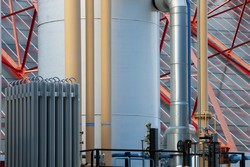Safer storage for compressed hydrogen
High-pressure cylinders have been used for years to store industrial gases in metallic tanks. Recently, hydrogen has been introduced as an alternative, zero-emission fuel in the transport industry. However, to use hydrogen in automobiles, the storage tank weight must be reduced while maintaining reliability. Carbon fibre-based composites that have light weight and high strength is a solution being explored. Within the project HYCOMP(opens in new window) (Enhanced design requirements and testing procedures for composite cylinders intended for the safe storage of hydrogen), researchers evaluated the behaviour of carbon composite materials over their intended service lifetimes to fill a critical gap in available experimental data. HYCOMP results provided a scientific basis for the development of regulations, codes and standards for the usage of composite cylinders to store compressed hydrogen. They are also expected to facilitate the development of tests for manufacturing quality assurance and in-service inspection. Specifically, researchers used acoustic emission methods to characterise the type of damage (fibre breaks, microcracks of the resin etc.) and its evolution over time. The effects of pressure and environmental conditions on the damage accumulation rate were assessed at micro scale. These studies laid the groundwork for the development of a numerical model that simulates damage accumulation to the critical state of damage. The latter is the point beyond which the structure becomes unstable due to the acceleration of the degradation process, resulting in tank rupture. In parallel, non-destructive testing methods were used to monitor the damage level at macro scale. This experimental work aimed to assess the influence of manufacturing process parameters. To estimate the tank’s initial performance, researchers carried out burst tests and cycling tests under controlled conditions. Thorough analysis of experimental data allowed researchers to define a list of recommendations for performance-based design and testing procedures. In addition, manufacturing quality assurance guidelines were formulated based on selected process parameters affecting tank performance. With a clear scientific understanding of damage accumulation in carbon fibre-composite hydrogen storage tanks, the next step for the HYCOMP team is to bring forth recommendations to standardisation committees. The knowledge accumulated could aid in increasing acceptance of high-pressure hydrogen storage technologies.



